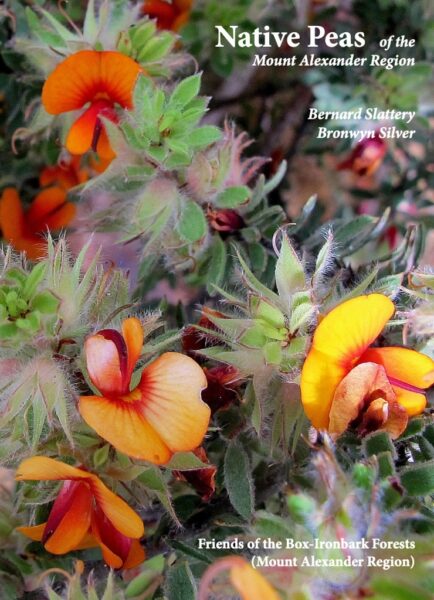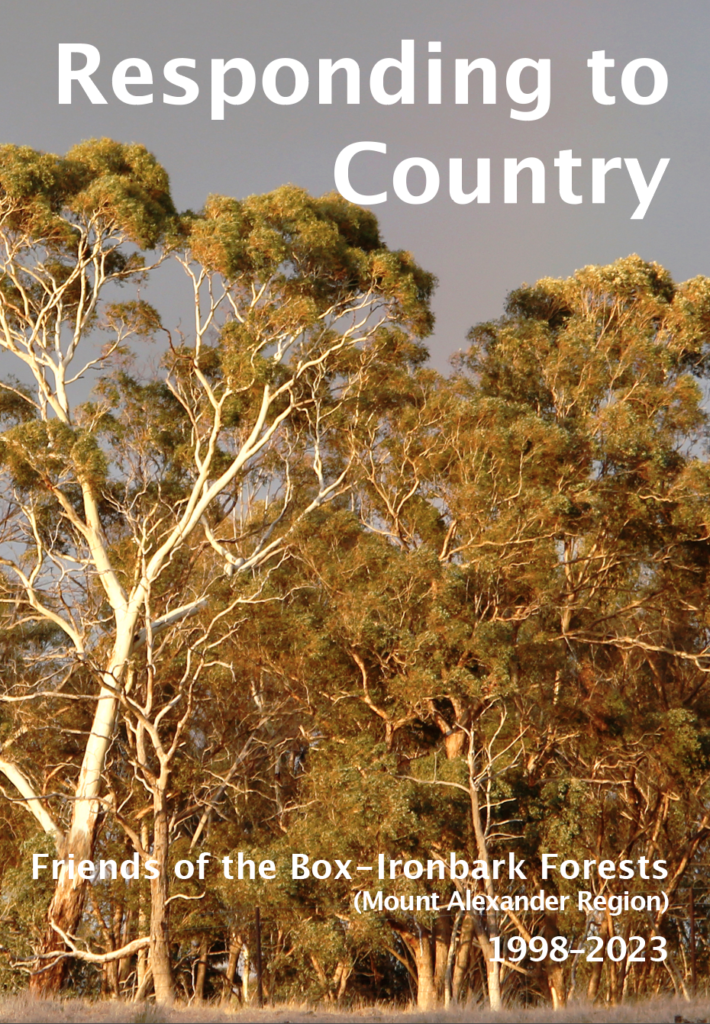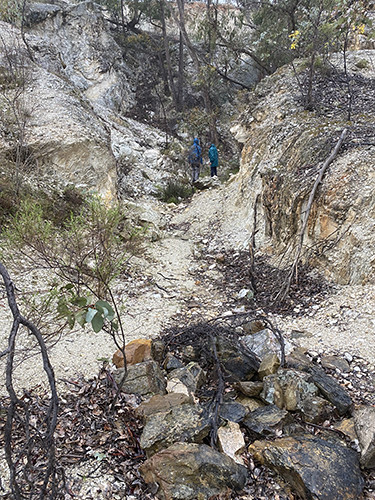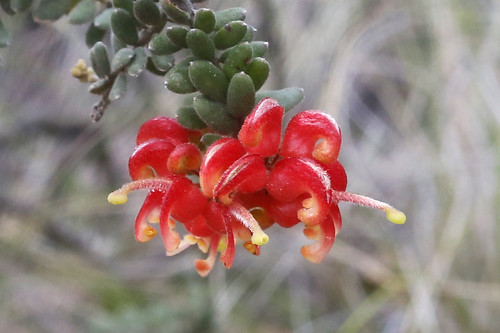Over 100 people packed into the Senior Citizens Hall last Tuesday to hear fire behaviour scientist Phil Zylstra question the science and logic behind current planned burning systems.
The talk focused on current programs centred on the reduction of leaf litter, considered as a major contributor to forest fire. Dr Zylstra set out to show that fuel reduction programs designed to reduce surface fuel neglect the role of the shrub layer. He argued that a forest left to itself provides its own protection against fire, and that concentration on fuel loads oversimplifies the fire challenge: fuel reduction burns may actually increase the area of wildfire.

Wewak Track, Castlemaine Diggings NHP, management fire zone, November 2010: concentration on reducing ‘ground fuel’ may be misplaced, and may even be counterproductive–as witness the photo below.
A feature of Dr Zylstra’s experience in fire management is his learning from Wurrundjeri Woi Wurrung elder Uncle David Wandin on the purpose and nature of indigenous fire, as contrasted with post settlement practices.
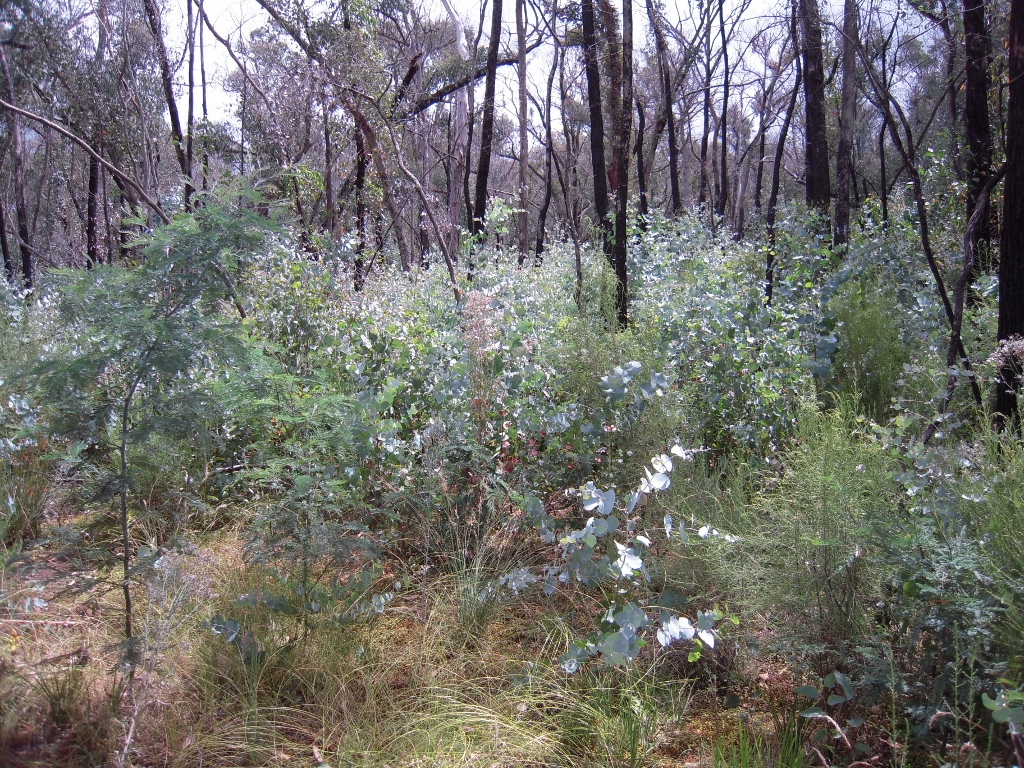
Wewak Track management fire zone, January 2012: prolific shrub and sapling regrowth can be a consequence of inappropriate fire.
Dr Zylstra’s research on fire behaviour and fuel danger is becoming increasingly relevant to forest managers. You can find his 2023 address (with Uncle Dave Wandin) to the Royal Society, ‘Decolonising fire science’ here. A shorter version of the talk is here
Accessible written accounts of his argument can be found here and here.
We recommend that readers have a look at the detailed material in these links.
The talk was organised by the Kinglake Friends of the forests, in combination with FOBIF, Friends of Whipstick, and the Whroo Conservation Network.


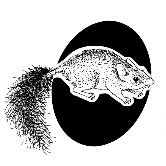
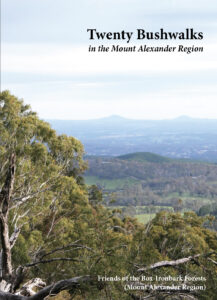
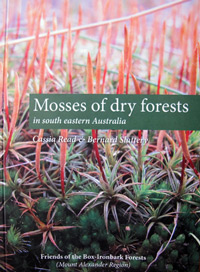 Click on image for info/order page
Click on image for info/order page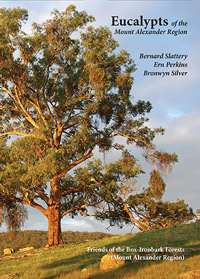 Click on image for info/order page
Click on image for info/order page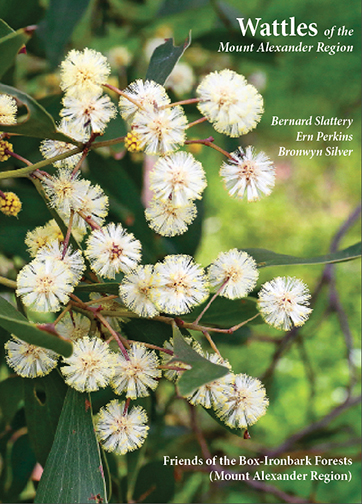 Click on image for info/order page
Click on image for info/order page